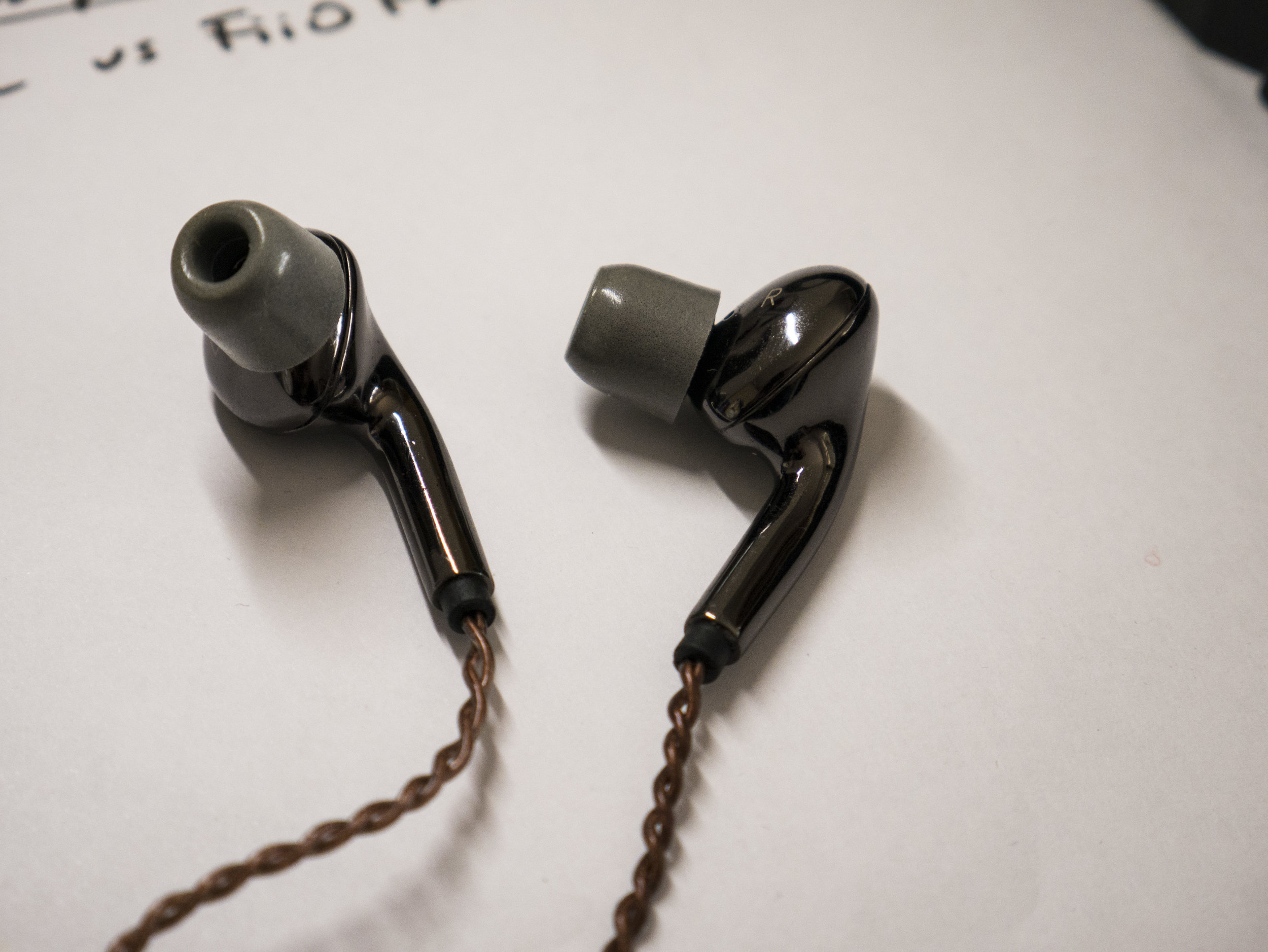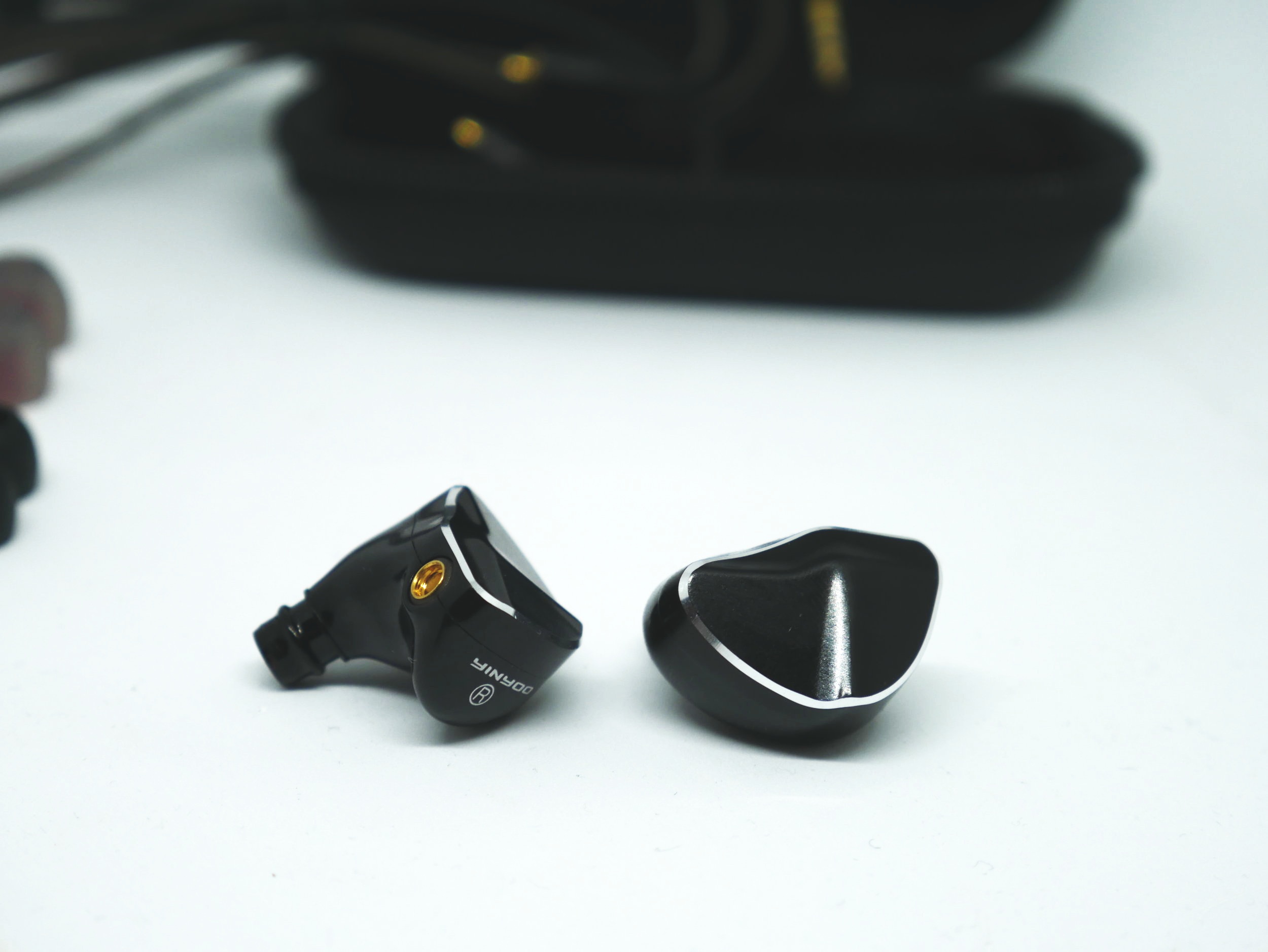Price: 10$
Where to buy: [link]
Specifications:
Impedance: 32 Ohm
Frequency response: 20-40k Hz
Sensitivity: 95 ± 3 DB/mW
Thanks to Jim from NiceHCK for providing this review sample.
Unboxing and first impressions
This could be your usual box. If you are familiar with NiceHCK products or Yinyoo ones, you’ll know this feeling. But this is a crazy cheap product, and I wouldn’t expect something like this. For 10$, you have a really nice hard carrying case and a complete set of accessories: 4 measures of silicon eartips, 2 pairs of double flange ones (with just a different color) and an amazingly built set of ceramic earphones with a non-detachable cable, which is however braided and very high-quality. The buds come protected in some plastic bags. I can say this is the best packaging you can find for the price.
The buds are very similar to the shape of an earbud, but they actually have nozzles to put ear tips on. This hybrid choice is good because the design remains unobtrusive, while the fit is a bit more secure than a classic earbud. The nozzle, however, is not that long, so you could need some memory foam tips to improve the stability, or use some longer tips – the ones which come in the box actually already are longer than average. I like the Tin HiFi P1 small foams here. The design and the build quality look and feel really premium, thanks to the weight, too, which is heftier than average. The cable comes with a microphone – but you can get a version without it. There’s one button which can be used for multiple commands (play/pause, answer, skip tracks). The cable itself is really good and has a chin slider which is not so useful because of the microphone which stops it from reaching your chin. All the inserts are made of metal.
Sound
My sources: FiiO M7 (standalone; to XDUOO XP-2/iFi xDSD via Bluetooth; to XP-2 via line-out; to xDSD via USB), Dodocool DA106 (mainly to XDUOO XP-2 via line-out); Mi MIX 2 to XP-2 and xDSD (via Bluetooth and USB), to Zorloo ZuperDAC-S, to Audirect Whistle; MacBook Pro 2012 to Focusrite 2i2.
My music: Jon Hopkins, “Singularity”; Billie Eilish, “When do we fall asleep, where do we go?”; Coldplay, “Ghost stories”; Bon Iver (Discography); Jack Garratt, “Phase”; Jamie Cullum, “Taller”; Sia, “Colour the small one”; The Bloody Beetroots & Jet, “The great electronic swindle”; Jacob Collier, “In my room” and “Djesse (Vol.1)”; John Coltrane, “Giant steps”; Lauv, “I met you when I was 18”, Oh Wonder (Discography), Radiohead (Discography), ecc..
My files: MP3, M4A, FLAC, ALAC, few DSDs (Pink Floyd).
Let’s talk about the microphone, which is impressive: clear and loud, a bit metallic and thin but better than every KZ counterpart I’ve encountered. If the mic sounds thin, this isn’t the case of the earphones themselves. Instead, they offer a good V shaped signature, which however isn’t so notched in the midrange and suffer of undertone vocals just in some cases. The EP10 have a general sound that I’d describe as punchy: the bass really does justice to dynamic drivers, with a good extension, a quick response and a noticeable body, which luckily never falls on the midrange. The tuning on these earphones is really well-made. I like the mid bass rumble as well as the sub bass extension, which is not crazy but it’s clean.
The mids are a bit recessed, which however doesn’t bother me that much, because most of the times voices are airy and not congested, instruments are well separated and percussions are “kicky” but moderate. Sometimes the piano feels less “on par” on some frequencies and certain instruments feel a bit thin, but I generally like the tuning, which is balanced. Sometimes the sound feels a bit artificial on the mid and treble area; I can assume this is due the ceramic body which can be less ideal than a heavy metal for the resonance (I remember the Xiaomi Half Ear with ceramic drivers, which were thin and artificial sounding, so maybe this could be related). Mids are not the focal point of this set, yet they are enjoyable even if recessed. Vocals are good, but not great: they don’t shine over the instruments, they just are on par when they are well mixed and mastered. I don’t find them the most linear, due to the non-flat tuning. I hear a pick on the upper midrange on my own voice when I hear some of my recordings which I’m not sure should be there. I’m not a technician, so I don’t know – and I don’t believe it’s important for the ones interested in this price range’s products – which frequencies are interested. So, vocals are just nice, a bit muddy, not very airy.
Treble is a bit emphasized, especially on the lower range. Unfortunately, I can hear some sibilance, but this is not – in this case – the sign of a bright signature. There’s no harshness here and the only against here is the poor control on some treble vocals which are a bit sharp.
The picks on the high range, however, are positive for the perceived stage, which is wider than average; not very deep, though. Imaging is average, too: not too sectorized but precise enough.
Comparisons
While I believe these are the exact same IEM as the BLON BL-01, I can’t verify because I don’t own this one. However, I find it difficult to compare something to the EP10, because of the extremely low price. I just have one in mind, which I don’t own anymore, though, which is the Xiaomi Dual Dynamic Driver. That sounds worse than the EP10, even though it has a dual driver configuration, because it handles much quieter volumes, then it crackles and sounds harsh. The punch is also much better on the EP10, as well as the tuning. However, I appreciate the mids of the Xiaomi more, because they are more U-shaped than V, and their notch is softer, so vocals are less buried.
Conclusions
I have to say that if I didn’t know the price of these earphones, I would have paid at least 3 times more; not only for the build quality and the materials, but also for the quality of the mic and for the amazing sound they can offer. This is absolutely the set I would recommend the most, having a low budget while needing the best offer.
Pros
Price
Build quality and materials
Microphone quality
Cable
Bass
Cons
Sibilance
Sound is a bit muffled
Vocals suffer the V shaped signature

























